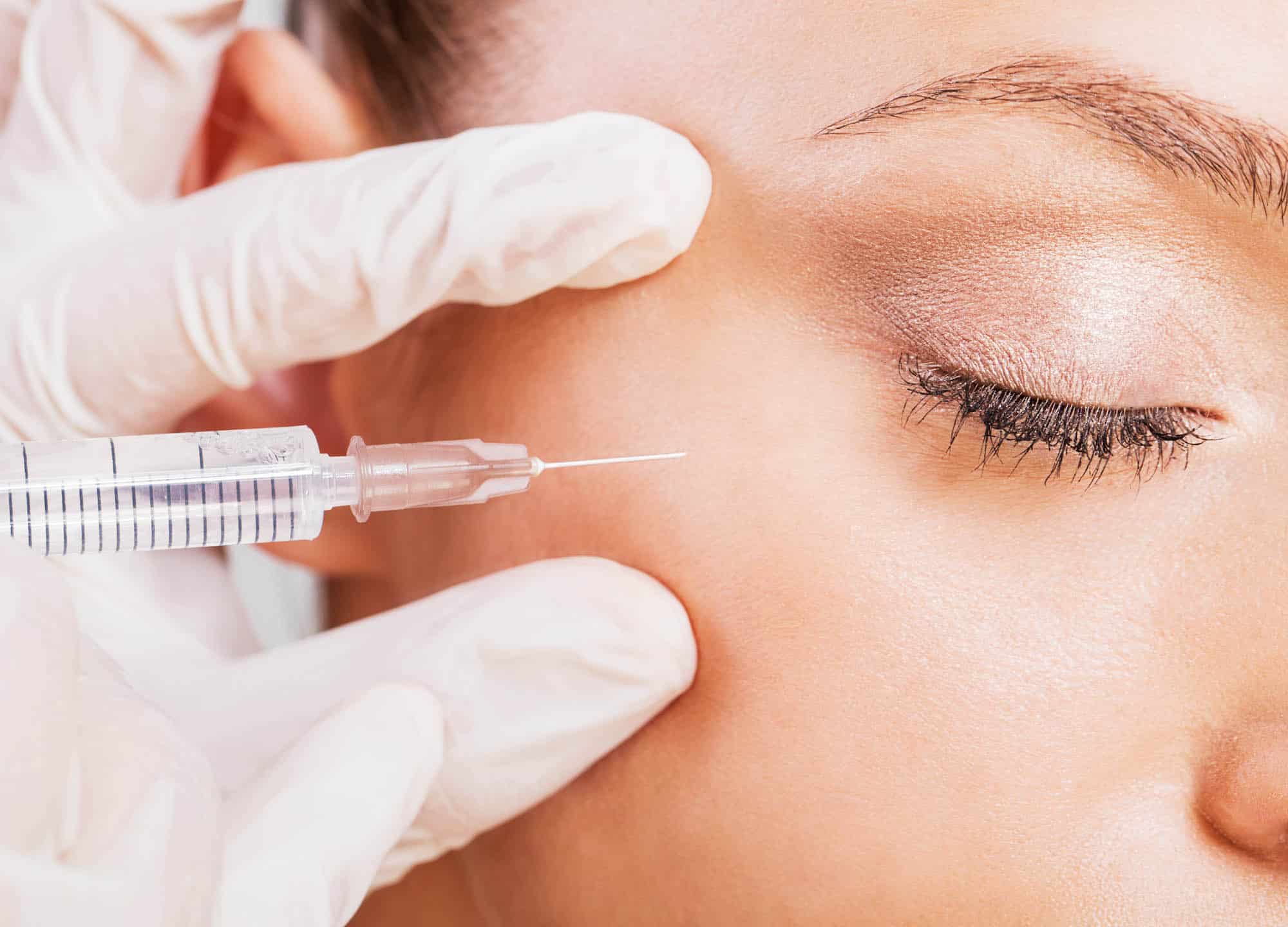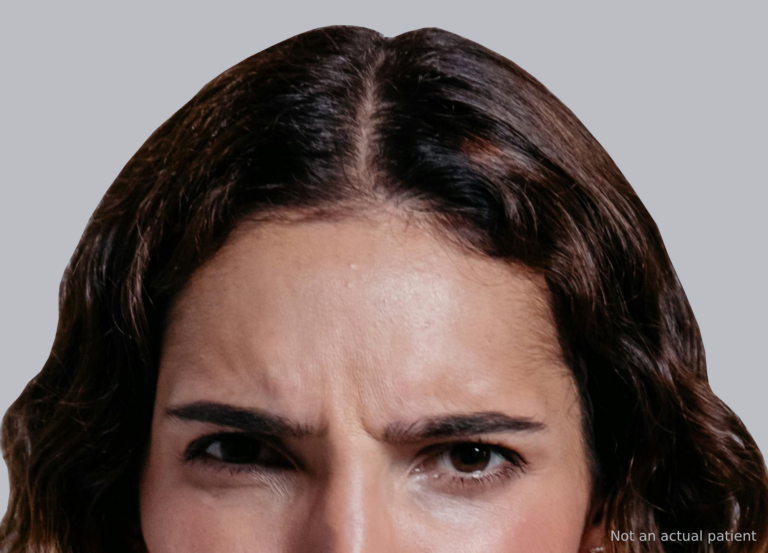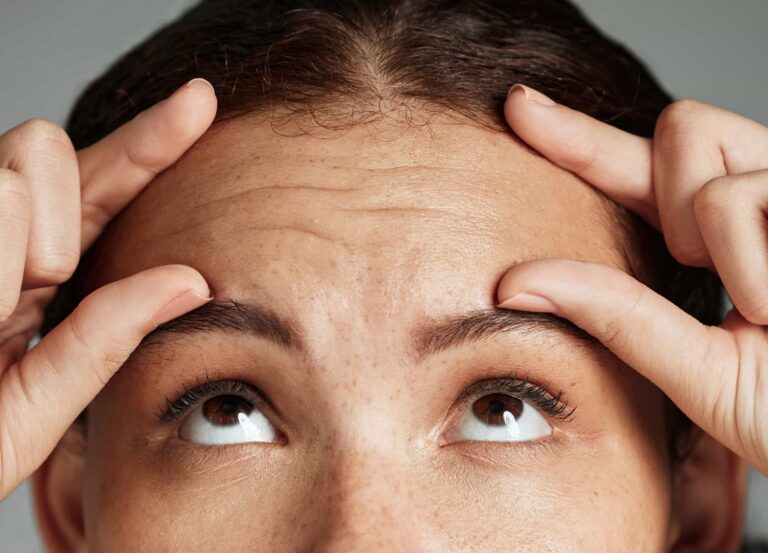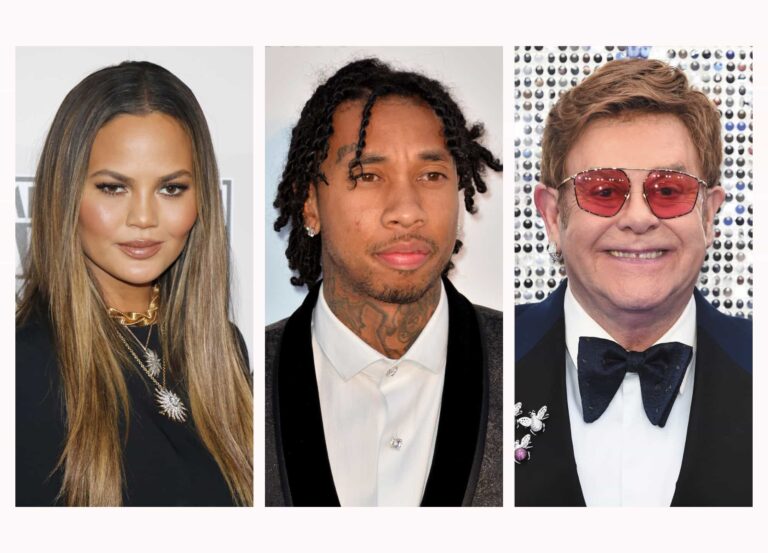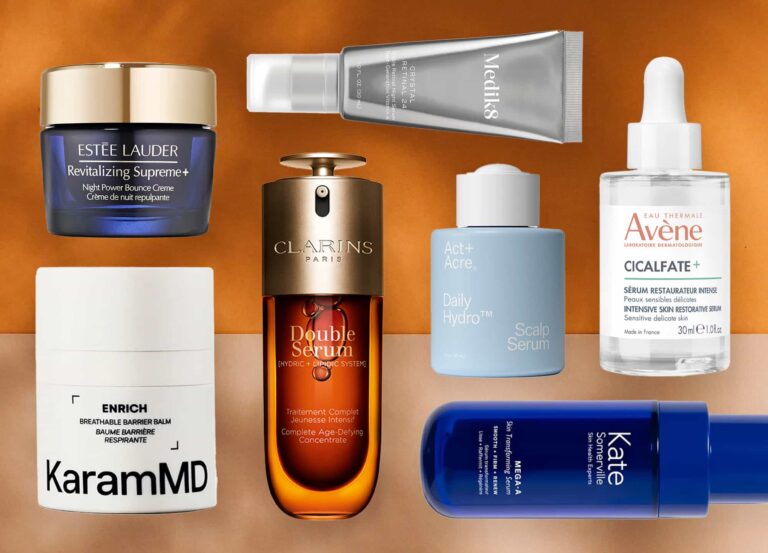This story has been medically reviewed for accuracy by Nashville, TN board-certified oculoplastic surgeon Dr. Brian Biesman on November 3, 2020.
The eyes have long been likened to windows—but the eyelids, anatomists argue, may be even more revealing. It’s here that we have “the thinnest skin of the entire body,” says Dr. Jason Bloom, a board-certified facial plastic surgeon in Bryn Mawr, Pennsylvania. It’s so diaphanous, it can hardly conceal the anatomy beneath. “The orbicularis muscle [encircling the eye] can show through the [lower lid] skin as a darker, redder area,” he notes. Similarly, the vast network of blood vessels residing here may radiate an inky indigo, especially in fairer skin types. And as the fat pads around the eyes wear thin, the resulting volume loss exposes shadowy hollows that no eye cream can fix.
Given the tear trough area’s irregular terrain and sheer quality, plumping hyaluronic acid fillers, such as Juvéderm, Restylane, and Belotero, can often impart a sort of filter effect, leveling valleys for a more even tone, filling out crepey fine lines, and helping to boost collagen production in the long-term. “One syringe can be so brightening,” Dr. Bloom says. When this nonsurgical, no-downtime rejuvenation treatment is done right, “patients get this wow result.”
Great filler treatment results start with good candidates—the best being those “in their 20s and 30s with under-eye hollows, minimal skin laxity, and little to no lower eyelid puffiness,” explains Dr. Mitesh Kapadia, a board-certified oculoplastic surgeon in Wellesley, Massachusetts. “Trying to fill the wrong candidate often leads to an unnatural appearance.” When imprudently applied, tear trough filler can make bags look bulkier and cause loose skin to turn lumpy.
When reviewing an injector’s B&As, look for these signs of authentic under-eye filler finesse.
1. A smooth transition from lower lids to cheeks
“The only lower lid issue that’s truly improved by filler is hollowing or a concavity that you see as a shadow,” says Dr. Bloom. When filling the sunken spaces that typically manifest as dark under-eye circles, injectors should correct to 100%—and stop, he adds, creating an even plane from the bottom lashes to the tops of the cheeks. “It shouldn’t be concave, and it shouldn’t be convex or rolling out—it should just be smooth.”
While seconding the importance of an uninterrupted lid-cheek junction, Dr. Kapadia offers one small caveat: At the innermost corner of the tear trough, “it’s natural to have some degree of concavity, [and] trying to get rid of this completely often leads to an overfilled appearance.”
Related: 15 Concealers Almost As Good As Under-Eye Filler
2. Undetectable filler—no bulging or blue tint
Beyond irregular contours, the Tyndall effect is another dead giveaway of having under-eye filler. The skin at the injection site appears blue, due to the precise way light scatters when it hits the gel particles beneath. According to Dr. Jessie Cheung, a board-certified dermatologist in Willowbrook, Illinois, that blue tinge can result from overcorrection or, more commonly, from injecting dermal filler too superficially under the skin’s surface. (Doctors say this commonly happens when inexperienced injectors use a blunt-tipped cannula versus a needle.)
Dr. Bloom says misplaced under-eye filler is one of the biggest problems he finds himself fixing. To inject filler into the proper plane, providers need to have a clear understanding of the unique way the tissues of the lower eyelid are structured. In every other area of the face, he notes, there’s a layer of fat separating skin from muscle. But under the eyes, “the skin and muscle are literally attached to each other, and then there’s fat underneath,” he explains. The goal is to inject filler below that skin-muscle composite—rather than aiming to implant it between those two bound layers—so “the muscle acts as a buffer between the skin above and filler below,” says Dr. Bloom. Tyndall is less likely when there’s muscle intervening between HA and thin skin.
3. Consistent lighting and posing in the before and after photos
While Tyndall can be glaring in person, you may not notice it in B&As. In fact, all of our experts were quick to comment on the misleading nature of filler photography—how contrived angles and lighting can make “less-than-stellar results look good,” says Dr. Cheung. Lighting alone can dramatically influence the appearance of the lower eyelids. “The most egregious cheat is when a before photo is taken without a camera flash and the after photo is taken with a flash,” notes Dr. Kapadia. “The flash reduces shadows, especially under the eyes, and makes everyone look better.” Before and after photos should be taken in the same lighting conditions—ideally, with the same camera, on identical settings. In both shots, the patient should be looking straight ahead—gazing up accentuates the tear troughs, says Dr. Bloom—with their chin level.
4. No persistent lumps, bumps, or swelling
While lumps can sometimes be blamed on poor above-muscle placement—which creates “an unnatural-looking worm of filler that can’t blend, no matter how hard you massage it,” says Dr. Bloom—more often than not, the wrong type of filler is what’s fueling unyielding nodules and unrelenting swelling. What’s more, this is an off-label procedure—no fillers are FDA-approved for use in the tear trough—so filler manufacturers can’t offer formalized training on how best to treat the under-eyes.
While most injectors use only HA gels—which can be dissolved with a shot of the enzyme hyaluronidase if problems arise—each HA is built differently, its unique structure and properties making it more or less suitable for the delicate under-eye area.
The higher the concentration of HA in a facial filler, for instance, the more water it pulls in from the surrounding tissues. “When a filler is extremely hydrophilic, it can create this baggy, pillowy area in the infraorbital hollow,” explains Dr. Bloom—which can linger for years after injection. While he says “there is no be-all and end-all filler for this area,” he typically uses Restylane-L under the eyes because “it has a relatively low HA concentration, which makes it not swell as much [as some other fillers].” Restylane-L also has “almost no rate of delayed nodules and is easy to dissolve,” says Dr. Bloom, which gives injectors and patients peace of mind.
Dr. Kapadia prefers the thinner HA Restylane Silk but also acknowledges “that the perfect filler for this area hasn’t been invented yet.” Some HAs are known to swell a ton; others have a reputation for breeding lumps—savvy injectors know to avoid them.
Regardless of filler type, certain patients are genetically prone to a specific type of swelling called malar festoons—“pockets of fluid and fat over the cheekbone, which cause the skin to puff and sag at the junction of the lower eyelid and the cheek,” says Dr. Cheung. “Filler can worsen an existing malar festoon—we think, as a result of too much pressure on the lymphatics—but when injected too superficially, it can also create a festoon in someone who’s never had one before.”
Attempting to camouflage festoons with filler, as one might do with ordinary under-eye bags, is generally a mistake. Since HA attracts water, it can magnify these mounds, causing stubborn bags to overtake the midface. “This is one of the most common under-eye filler complications that I treat,” she adds. To minimize festoons, she injects hyaluronidase, to break down any existing filler, and uses radiofrequency energy to “reduce excess fat while tightening the skin.”







